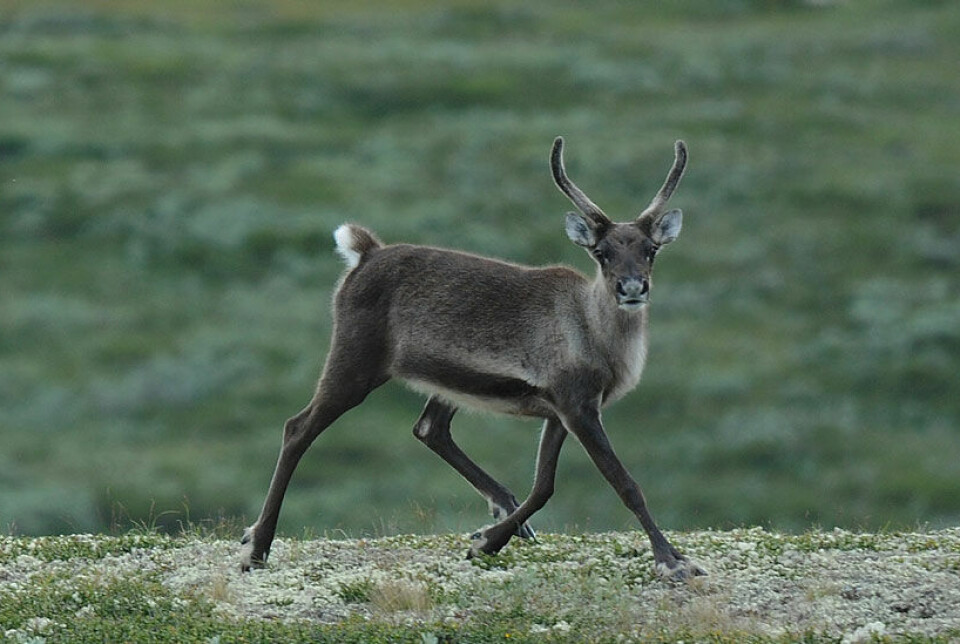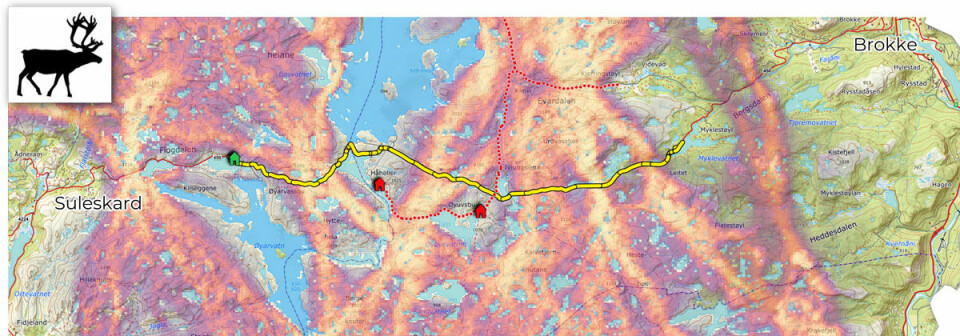THIS CONTENT IS BROUGHT TO YOU BY NINA - Norwegian Institute for Nature Research - read more
Could a tunnel help wild reindeer in Norway?
Researchers have looked at solutions to reopen access to important grazing areas.

Since the Brokke–Suleskard road opened in 1992 (see map below), wild reindeer have largely avoided summer grazing areas south of the road.
Increased traffic and human activity make it difficult for the animals to cross the road, limiting access to key habitats in the southern parts of Setesdal–Ryfylke wild reindeer area.
To solve this, Agder County Municipality is considering tunnel options to restore connectivity and make former grazing areas accessible again.
Three options tested
Researchers from the Norwegian Institute for Nature Research (NINA) simulated the impact of three tunnel alternatives, along with future use of the current road, to see how they would affect access to grazing and calving areas.
“The most effective option is a 17-kilometre tunnel, without a road or trails on the surface," says NINA researcher Manuela Panzacchi.
However, she notes that this needs to be combined with broader measures, because female reindeer currently completely avoid this area in summer.

Simulation supports decision-making
Wild reindeer are classified as Near Threatened in Norway. The population in the Setesdal–Ryfylke area is in poor condition according to Norway's quality standard for wild reindeer.
The local municipality (Agder County Municipality) requested the simulations as part of their plan to develop targeted action plans for wild reindeer.
“One of the main challenges for wild reindeer in Setesdal–Ryfylke is that their habitat is fragmented and degraded due to reservoirs, cabins, human activity, and roads, as well as a significant number of domestic grazing animals,” says Panzacchi.
Better knowledge leads to better solutions
To choose the best solutions, solid information is needed. This includes understanding where key habitats and migration corridors are, and having data on how different types of disturbances add up to affect the reindeer.
“This is essential both to avoid suboptimal solutions that fail to meet conservation goals, and to reduce the potential for conflict among local stakeholders,” says Panzacchi.
Reference:
Panzacchi et.al. Scenario Analyses. Evaluating the effect of building a tunnel on the Brokke-Suleskard road for wild reindeer. Statistical support fot the development of the Mitigation Plan for wild reindeer in Setesdal Ryfylke. NINA Report 2596, Norwegian Institute for Nature Research, 2025. (Abstract)

This content is paid for and presented by NINA - Norwegian Institute for Nature Research
This content is created by NINA's communication staff, who use this platform to communicate science and share results from research with the public. NINA is one of more than 80 owners of ScienceNorway.no. Read more here.
More content from NINA:
-
How will climate change affect lakes worldwide?
-
White-tailed sea eagles are breeding in Ireland again after more than a century
-
Norwegian white-tailed sea eagles are helping to rebuild a lost population in Ireland
-
1 in 4 freshwater species are at risk of extinction: "It's not too late to take action"
-
Insects prefer cold winters with lots of snow
-
Weather radars reveal where birds migrate




































